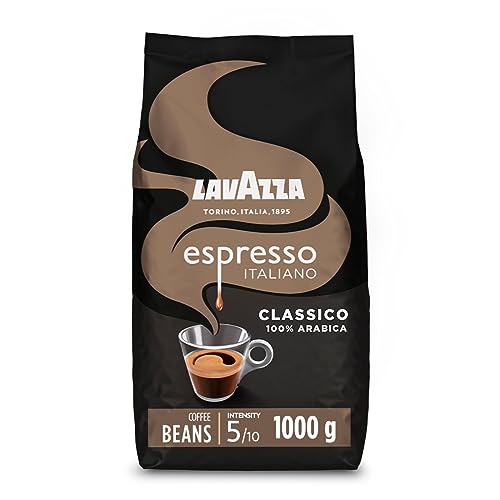The 10 Scariest Things About Arabica Coffee Beans 1kg
2024.11.25 20:22
 arabica coffee beans 1kg of coffee beans; check out your url,
arabica coffee beans 1kg of coffee beans; check out your url,The arabica coffee bean is a highly sought-after variety of coffee. It thrives at elevations along the equator, and requires specific climate conditions to flourish.
 New varieties of coffee have been created that are more resistant against disease and climate changes. These new varieties offer unique flavors that differentiate them from other types of coffee.
New varieties of coffee have been created that are more resistant against disease and climate changes. These new varieties offer unique flavors that differentiate them from other types of coffee.Origin
Arabica beans are the most well-known beans for Western blends of coffee and account for approximately 60% of the coffee production around the world. They are more resistant to heat and dryness than other varieties of coffee, making them easier for warmer climates to cultivate. They make an intense and creamy brew that has a smooth taste. They also contain less caffeine. These beans are also popular for espresso-based drinks.
Coffea arabica is an evergreen shrub that thrives in higher elevations. It prefers a tropical climate, with temperatures between 15 and 25 degrees Celsius. The plant requires a consistent amount of rainfall ranging from 1 kg coffee beans,200 to 2,200 millimeters annually. Researchers have created a variety cultivars for cultivation. It is a plant with a high level genetic diversity. Bourbon and Typica are two of the most important arabica coffee cultivars of today.
Wild plants of the genus Coffea are bushy and their leaves are simple elliptic ovates to an oblong shape, 6-12 cm (2.5-3 in) long and 4-8 cm (2-3 in) wide. Fruits are drupes containing two seeds, which are commonly referred to as coffee beans, inside the fruit. They are covered by an outer skin of flesh that typically is black red, purple or purple and an inner skin which is usually pale yellow to pink.
Raw coffee beans have been a favorite for centuries because of their distinctive flavor and stimulating qualities. Contrary to the Robusta variety of coffee bean, which is used in most blended coffees beans are Best coffee beans 1kg enjoyed roasted to medium or light because this preserves their natural flavor and properties. The oldest written records of drinking coffee date to the year 1000 BC in the Kingdom of Kefa, Ethiopia, where members of the Oromo tribe crushed the beans and mixed them with fat to form an alcoholic paste. It was consumed to boost the mood.
The location, climate and farming practices of the region in which the coffee beans are harvested determine the specific origin of the coffee. Similar to apples which are grown in a variety of different regions and can be distinguished by their distinctive flavor and texture. To determine the source of a specific coffee bean, FT/MIR spectrophotometry can be used to detect markers, such as trigonelline and chlorogenic acid which differ based on the environment in which the bean was cultivated.
Taste
The flavor of arabica coffee beans is soft and delicate with chocolate or fruity undertones. It is not as bitter and astringency and is one of the finest varieties that are available. It has a lower level of caffeine than Robusta, making it an excellent option for those who want a cup of coffee without the high dose of stimulants.
The roast level, processing method, and the variety of arabica beans can all affect the flavor. There are a variety of arabica, including Bourbon, Caturra and Kona. Each has a distinct flavor. In addition, the varying acidity and sugar levels of arabica coffee can affect the overall flavor of the coffee.
The coffee plant is found in the wild at high elevations across the equator. However, it is most commonly cultivated by people at lower elevations. The plant produces red, yellow, or purple fruits with two seeds. These seeds are called coffee beans, and are the reason why arabica coffee has its distinct flavor. After the beans have been roasted, they acquire the familiar brown color and flavor we all enjoy.
After harvesting, beans are processed either dry or wet. Coffee beans that are processed wet are cleaned and fermented, before drying in the sun. The wet process preserves arabica coffee's natural flavor profiles while the dry process produces a robust and earthy taste.
The roasting of arabica coffee beans is a crucial step in the production process, as it can dramatically alter the flavor and aroma of the final product. Light roasts bring out the flavors inherent to the arabica bean, whereas medium and darker roasts balance the flavors of the origin along with the characteristics of roasted coffee. For those looking for an extra special cup of coffee, try choosing a blend made of only arabica beans. These beans of higher quality have a unique flavor and aroma that can't be matched by any other blend.
Health Benefits
The caffeine in coffee gives you the energy that you need to get going in the morning. It is also believed to have numerous health benefits and help you stay alert throughout the day. It has a very concentrated and unique flavour that can be enjoyed in a variety of ways. You can enjoy it as a hot beverage or add it to ice cream, or even sprinkle it on top of desserts.
Arabica beans are the most adored and most favored option of all coffee brands since they provide a balanced cup of joe with smooth and creamy texture. They are typically roast at a medium dark level and are known for their chocolatey, fruity taste. They are also known to have a smoother flavour and less bitterness than other beans such as robusta.
The history of arabica coffee beans dates back to around 1,000 BC when the Oromo tribes of Ethiopia first began drinking it as stimulants. In the 7th century, Arabica was officially named as the coffee bean after it was transported to Yemen where scholars roasted and ground the beans. They then wrote the first written record of coffee making.
Today coffee beans are grown in over 4,500 plantations across India with Karnataka being the most prolific producer of it. The state has produced a record number of 2,33,230 metric tons of arabica beans in the year 2017-18. Karnataka has many arabica coffee varieties, including Coorg Arabica (also called Coorg Arabica), Chikmaglur Arabica (also known as Chikmaglur Arabica), and Bababudangiris Arabica.
Green coffee beans are abundant in antioxidants and contain high amounts of chlorogenic acids which belong to a class of phenolic compounds. These are believed to have anti-diabetic and cardioprotective properties. When the beans are roasted and then roasted, they are able to lose 50-70 percent of these substances.
Along with coffee, arabica beans have a small amount of vitamins and minerals. They are rich in manganese, potassium and magnesium. The beans are a good source for fibre which aids in reducing cholesterol and aids in weight-loss.
Caffeine Content
When ground and roasted the beans are a source of caffeine in a range of 1.1 percent to 2.9%. This is equivalent to 84mg or 580 mg per cup. This is significantly lower than the caffeine content of Robusta beans which can have up to 4.4 percent caffeine. The exact amount of caffeine consumed depends on a variety of factors, including the method of brewing and the temperature of the water (caffeine can be extracted more easily at higher temperatures) and the extraction method.
Coffee is also a major source of chlorogenic acids which belong to the phenolic acid family. They have antioxidant properties. These compounds have been found to reduce the risk of developing diabetes heart disease, liver disease. They also enhance the immune system and promote weight loss.
Coffee also contains a few minerals and vitamins. It contains magnesium, Niacin and Riboflavin. It also contains potassium and a small amount of sodium. It is essential to keep in mind that coffee in its pure form, without milk or sugar, should be consumed with caution as it can have a diuretic affect on the body.
The background of the coffee plant is interesting. It was discovered by Oromo tribes in Ethiopia around 1000 BC. It was a popular drink among tribesmen to sustain themselves during long journeys, however it wasn't until later that it was made into a drink and was developed following the Arabian monopoly was lifted and it was named. Since then, it has become a favorite around the world and has evolved into an international industry that provides a wealth of benefits to human health and the environment. Its success is due to the fact that it has a delicious taste and has many health-enhancing properties. It is a great supplement to your diet if consumed in moderation. It is delicious and provides you with a boost of energy.